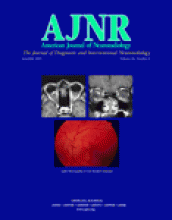Whenever there is a new advance in imaging or a new medical procedure, the inevitable problem arises regarding what can be considered normal. Radiologists the world over were either pleased or dismayed when the advent of high-resolution CT imaging made possible the visualization of the stapedius muscle and the individual cochlear and vestibular branches of the 8th cranial nerve. And when innovations in the treatment of glioblastomas made possible the delivery of tumor specific radiation-laden antibodies into a surgically created cavity, the next question that needed to be answered was what was the normal enhancement pattern for radiation necrosis following these procedures, as the enhancement pattern was strikingly different compared with regional radiation therapy. A similar need has arisen with the rising popularity and prevalence of percutaneous vertebroplasty, as there are patients who present postprocedure with back pain that may or may not be related to the level already treated.
To this point, there has not been any description of what MR findings can be considered normal in a vertebral body that has undergone vertebroplasty. In light of the invasiveness of the procedure, as well as the potential effects of the heat and pressure generated during the procedure, it seems likely that some changes would be inevitable. The spectrum of normal postprocedure findings is important to know when evaluating the treated patient who returns with pain, because the significance of edema or additional height loss within the treated level can affect whether to retreat these patients at the same level. Dansie et al’s article, “MR Imaging Findings After Successful Vertebroplasty,” in this issue of the AJNR, is an excellent study that addresses these issues, and, although it leaves open the door for further studies, it should be useful to vertebroplasty practitioners wrestling with the occasional patient who returns with pain and has vertebral body edema and height loss at a previously treated level. The important point that is made by this study is that the presence of such findings, which are certainly abnormal in most patients, can be seen in postvertebroplasty patients whose pain is coming from a different location, potentially saving patients from additional, ultimately unnecessary, and unsuccessful repeat procedures.
It is unreasonable, however, to conclude from the data presented in this article that painful refractures at a previously treated level do not occur. In my experience, I have seen at least one patient whose pain was definitely originating from such an instance, and there is a case report in the literature describing a refracture with cement extrusion that had to be surgically stabilized. These types of cases, however, are likely quite rare, and, on the basis of this study, most vertebroplasty patients who re-present with vertebral body edema and compression at that site will not be symptomatic from that level, despite the MR imaging appearance.
Regardless of whether some treated vertebral bodies require retreatment for pain relief, the strong data in this article should make all spine interventionalists hesitate before proceeding with such a course of action. Adjacent level fractures are a commonly encountered phenomenon and can be problematic when adjacent to a previously treated level with edema or height loss, a situation where it can be easy to rationalize retreatment of the initial level at the same time as the vertebroplasty of the adjacent one. It is interesting that, in this article, all of these patients were successfully treated with vertebroplasty of the adjacent level only. Pain coming from a previously treated level appears to be almost a diagnosis of exclusion, and certainly another source of pain, such as additional level fracture or facet disease, should be extensively sought and treated before considering a repeat vertebroplasty.
One hopes that the authors and others might use this article as a starting point when considering follow-up studies to confirm and further the work presented here. A large study comparing follow-up MR images in all vertebroplasty patients, whether pain-free or not, would be an excellent companion study, as would descriptions of cases of painful refracture that were successfully retreated.
- Copyright © American Society of Neuroradiology












